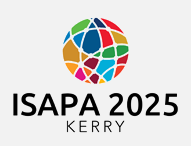Start Date
19-6-2025 10:30 AM
End Date
19-6-2025 12:00 PM
Abstract
Introduction. Active play is often the primary form of physical activity (PA) in early childhood, typically involving child-led, unstructured activities. Active play has been used as a method of assessment and promotion of physical activity in the early years. This review aims to investigate the quality of participation in active play for children with disabilities aged 0-4 in current literature, to provide insight to strategies of inclusion. Methods. The paper adhered to Joanna Briggs Institute best practice guidance and reporting items for scoping reviews. A search of Medline, CINAHL, Scopus, Embase, and SportDiscus was conducted in May 2024, using 91search terms. Eligible studies included children aged 0–59 months with diagnosed (or suspected) disabilities, investigating or measuring active play as child led physically active play experiences, and was primary qualitative/quantitative literature available in French or English. Extracted data was synthesized descriptively and analyzed thematically using the Quality Participation Framework. Results. From 14,580 records, 30 papers were included (after duplicates and irrelevant papers were removed). Disabilities in participants included: sensory (20%: 5 visual impairment, 2 auditory impairment), cognitive (33%: 6 autism, 2 Down syndrome, 2 other), physical (23%: 4 cerebral palsy, 3 other), and multiple disability types (23%). Active play was reported either quantitatively (n = 24; i.e., energy expenditure) or qualitatively (n= 8; i.e., play experiences). Conclusions. This review provides an understanding of the current state of research on active play for children with disabilities in the early years. Future research should address strategies to facilitate quality participation in active play.
Recommended Citation
Capone, Alessia M.; Arbour-Nicitopoulos, Kelly; de Lannoy, Louise; Deliscar, Suzanne; Taylor, Leah G.; Tucker, Patricia; Vanderloo, Leigh M.; and James, Maeghan E., "Active play among young children (0-4 years) with disabilities: A scoping review" (2025). International Symposium of Adapted Physical Activity and International Symposium on Physical Activity and Visual Impairment and Deafblindness. 22.
https://sword.mtu.ie/isapa/2025/day4/22
Active play among young children (0-4 years) with disabilities: A scoping review
Introduction. Active play is often the primary form of physical activity (PA) in early childhood, typically involving child-led, unstructured activities. Active play has been used as a method of assessment and promotion of physical activity in the early years. This review aims to investigate the quality of participation in active play for children with disabilities aged 0-4 in current literature, to provide insight to strategies of inclusion. Methods. The paper adhered to Joanna Briggs Institute best practice guidance and reporting items for scoping reviews. A search of Medline, CINAHL, Scopus, Embase, and SportDiscus was conducted in May 2024, using 91search terms. Eligible studies included children aged 0–59 months with diagnosed (or suspected) disabilities, investigating or measuring active play as child led physically active play experiences, and was primary qualitative/quantitative literature available in French or English. Extracted data was synthesized descriptively and analyzed thematically using the Quality Participation Framework. Results. From 14,580 records, 30 papers were included (after duplicates and irrelevant papers were removed). Disabilities in participants included: sensory (20%: 5 visual impairment, 2 auditory impairment), cognitive (33%: 6 autism, 2 Down syndrome, 2 other), physical (23%: 4 cerebral palsy, 3 other), and multiple disability types (23%). Active play was reported either quantitatively (n = 24; i.e., energy expenditure) or qualitatively (n= 8; i.e., play experiences). Conclusions. This review provides an understanding of the current state of research on active play for children with disabilities in the early years. Future research should address strategies to facilitate quality participation in active play.

